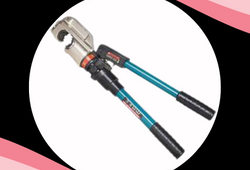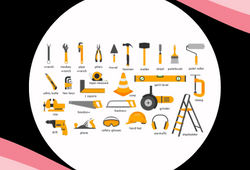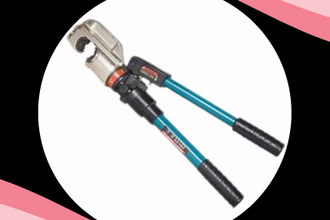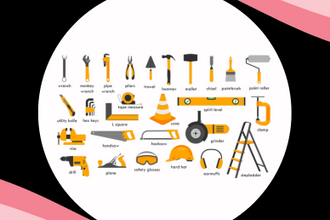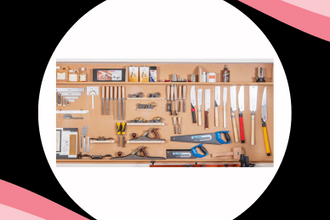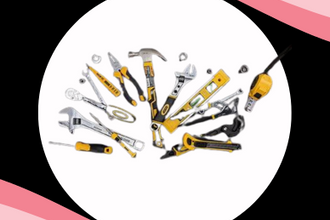Did you know a hydraulic jack can lift thousands of pounds with just a small amount of force?

This powerful tool utilizes liquid pressure to help you lift heavy objects such as cars or machinery safely and smoothly. If you’re changing a tire or working in a workshop, a hydraulic jack makes heavy lifting much easier. Let’s explore how this handy tool works and why you might need one. We’ll also cover its types, common uses—especially in construction—how it works, and tips on choosing the right one for your needs.
What is a hydraulic jack ?
A hydraulic jack is a device that uses fluid pressure to assist in lifting heavy objects more effectively. Inside, it has three main parts: a cylinder, a piston, and hydraulic fluid. When you pump the jack, the fluid pushes the piston up inside the cylinder, which lifts the load. This makes lifting heavy objects much easier than using a manual jack, which relies only on your strength. Think of a hydraulic jack like a strong arm powered by oil doing all the hard work for you, so you don’t have to!
Types of Hydraulic Jacks
Hydraulic jacks come in various styles, each designed for a specific task. The most common types include:
Bottle Jack
Shaped like a bottle with a tall, narrow cylinder, this type is compact yet powerful. It's ideal for lifting vehicles or heavy machinery in tight spaces.
Floor Jack
These jacks feature a broad base and wheels, making them easy to move. They're often used in garages because they offer smooth and steady lifting for cars and trucks.
Strand Jack
Strand jacks are heavy-duty tools often used in construction and shipbuilding. They lift massive loads using thick steel cables known as strands, with precise control during lifting operations.
Air Hydraulic Jack
This type combines air pressure and hydraulic power, making it fast and efficient. It's commonly found in industrial environments where quick and safe lifting is essential.
Each jack operates a little differently, but they all rely on hydraulic pressure to move heavy objects with less effort.
Uses of a Hydraulic Jack
Everyday Uses
Hydraulic jacks are handy tools used in a wide range of places. They’re commonly used to lift cars, trucks, and other heavy items with minimal effort. Mechanics, tow truck operators, and even DIYers use them every day to make tough jobs easier and safer.
Hydraulic Jacks in Construction
In the building industry, hydraulic jacks serve a critical role. They are used to raise heavy beams, machinery, and even sections of entire structures. When a foundation needs lifting or leveling, hydraulic jacks provide the required assistance to stabilize and adjust the structure safely.
How a Hydraulic Jack Works
A hydraulic jack lifts heavy objects by using fluid pressure built up inside its system. When you press the handle, it pushes the hydraulic fluid into the main chamber of the jack. As more fluid enters, pressure increases and pushes a piston upward. This movement raises the object placed on top of the jack.
You can think of it like inflating something inside a small tube—the pressure makes the inside part move upward. The more you pump, the higher the piston goes. This system enables you to lift heavy loads without requiring a lot of muscle power.
How to Choose the Right Hydraulic Jack
Choosing the correct hydraulic jack helps you lift heavy items more safely and with less effort. Here’s what to look for:
Weight Capacity
Make sure the jack can support the full weight of the object you plan to lift. Using one with too low a limit can be dangerous.
Height Clearance
Check the clearance under your vehicle or machine. Some jacks are made with a low profile to fit under smaller spaces.
Jack Type
There are options including bottle jacks, floor jacks, or trolley jacks, depending on your project and space needs.
Ease of Transport
If you’ll be moving it around often, look for features like wheels or carry handles to make transport easier.
Cost vs. Durability
A high-quality jack may cost more but is more reliable and lasts longer. It’s also safer in the long run.
Tip: For lifting SUVs, a bottle jack with a 3-ton weight limit is often a solid choice.
Conclusion
Throughout this blog, we’ve taken a close look at hydraulic jacks: what they are, the different types you might find, and the many ways they’re used—from changing tires to heavy construction work. We’ve also explained how hydraulic jacks work, given you tips on how to find the best one, and shared important safety reminders to keep every lift safe and smooth. If you’re feeling ready to pick a hydraulic jack, that’s great! But if you still have any doubts or need more information, don’t hesitate to check out the FAQ section below. We’ve put together answers to the most common questions, and if that’s not enough, our team of experts is here to help guide you.
FAQs About Hydraulic Jacks
Q. What oil should I use in a hydraulic jack?
A. Most hydraulic jacks use special hydraulic oil. It’s best to check your jack’s manual for the exact type. The right oil helps your hydraulic jack run smoothly and protects it from wear or damage.
Q. Why is it called a hydraulic jack?
A. It’s called a hydraulic jack because it uses hydraulic fluid (usually oil) to create pressure. This pressure helps lift heavy loads easily, using the power of liquid.
Q. What is an automatic hydraulic jack?
A. An automatic hydraulic jack lifts loads without needing you to pump the handle. It relies on a motor or other automatic system to raise and lower the load, making work faster and easier.
Q. What is the main advantage of a hydraulic jack?
A. The biggest advantage is that it lifts weighty things with little effort. It utilizes fluid pressure to increase your force, making tough jobs simple and safe.




